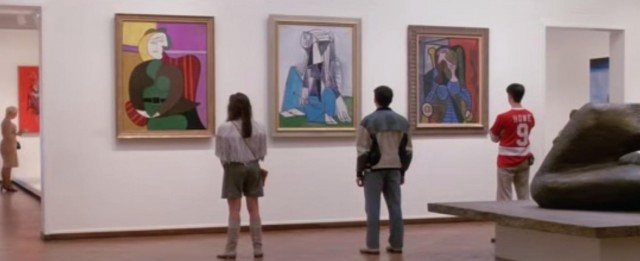“If You’re Going To Splurge, Buy Art”

Filmmaker John Waters is charming in this Business Insider video, giving financial advice to millennials. (“I don’t trust men my age who buy convertibles.” Me either, JW!) He’s always been fairly conservative with his money, he says, choosing mutual funds over individual stocks and real estate as his primary investments: he bought residences in his hometown of Baltimore, in NYC, and in San Francisco. Good choices, as things turned out.
The art market scares me; it seems way too capricious. I would never attempt to make money by guessing which up-and-comer will up-and-come out ahead of all the others. If you’re into the idea, though, Investopedia has some tips, including the inside scoop on a fascinating phenomenon of which I was previously unaware, “cruise auctions”:
Cruise auctions work on the principle that buyers believe authenticity equals high value. Unfortunately, authenticity does not guarantee the rarity of a piece or its importance in the art world. The critical guideline for buying art cannot be repeated too often: art that is valuable is art that is rare.
But how can you know whether your auction find is a rare commodity? Do your research. Hit the internet café on your ship before you plunk down the plastic. You can Google the artist and the specific artwork to get some history, and check sites such as artfact.com or eBay to get a representative sample for pricing.
The site also points out, though, that the vast, vast majority of paintings are never resold. So don’t buy anything you don’t enjoy looking at; your appreciation might be all you ever get out of your purchase.
investors are embracing art-as-an-asset-class as if it were a newly discovered van Gogh. But is it?
Research we completed recently and presented in August 2013 at the European Finance Association conference shows investors would be wise to be wary. The returns of fine art have been significantly overestimated, and the risk, underestimated. Our research, based on the most complete auction database, BASI (Blouin Art Sales Index) shows the true annual return of art as an asset class over 1972 to 2010 was closer to 6.5%, instead of the 10% that the index shows. Moreover, holding an art fund in your portfolio does not increase the chances that the portfolio will outperform. …
Not only are the returns of art lower than investors think, but also the risk is higher.
Still, perhaps you trust your taste the way John Waters trusts his, and you have some money to play with. Investopedia can get you started:
When you’re ready to hit the galleries and invest in the future of art, go in with your eyes wide open. Gallery owners will tell you that buying art is an emotional decision, but don’t fall for that line if you are thinking of it as an investment. Research any living artists who catch your eye. Learn about their education, their commissions and their exhibits. Visit museums, galleries and art institutions in your area regularly so you can recognize potential movers and shakers in your region. If you’re considering a piece by a renowned artist, get an appraisal. Look for quality, and don’t buy anything in bad condition.
Watch the full video here.
Support The Billfold
The Billfold continues to exist thanks to support from our readers. Help us continue to do our work by making a monthly pledge on Patreon or a one-time-only contribution through PayPal.
Comments